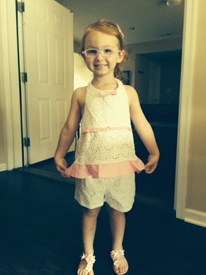The long term, or late effects, or retinoblastoma depend on a number of factors:
- The size of the tumor(s) that were present
- The therapy that was given
- The age at which the therapy was given
- Genetic (inherited) or non-genetic (not inherited) form of the disease. Children with the genetic form have an increased risk of developing other cancers later in life.
Eye Problems After Treatment for Retinoblastoma
For patients treated with external beam radiation therapy, the following complications can occur:
- Cataracts: Clouding of the lens of the eye.
- Enophthalmos: Sunken eyeball within the orbit.
- Keratitis: Inflammation of the cornea.
- Keratoconjunctivitis sicca: Inflammation of the cornea and the conjunctiva due to dryness.
- Lacrimal duct atrophy: Shrinking of the lacrimal duct, which drains tears from the eye.
- Optic chiasm neuropathy: Damage to the nerves that send visual information from the eye to the brain.
- Orbital hypoplasia: Underdevelopment of the eye and surrounding tissues.
- Retinopathy: Damage to the retina. Painless vision loss is the major symptom of retinopathy.
- Telangiectasias: Enlargement of blood vessels in the white part of the eye.
- Xerophthalmia: Scarring of the tear glands.
Other late effects of treatment for retinoblastoma
- Scarring and visual problems can occur in patients treated with local therapy to the eye, such as laser, heat or cryotherapy, or chemotherapy injected into the tumor area. These are defined based on the amount of treatment received and the location of the tumors in the eye.
- For patients treated with surgical removal of the eye (enucleation), care must be taken to have a well-fitted prosthesis (false eye), which is changed over time to allow the orbit to grow appropriately.
Caring for Eyes Following Retinoblastoma
Anyone who has been treated for retinoblastoma should have a careful examination by an ophthalmologist at least once a year to monitor for any possible complications.
It’s important to protect your eyes from further damage. Some ways to do this are:
- Wear sunglasses with UV protection when in bright sunlight
- Wear protective eyewear for sports or when using power equipment or hazardous chemicals
- Avoid substances that can injure your eye such as sharp toys and fireworks
- Never play with fireworks or sparklers of any kind to avoid accidental injury

